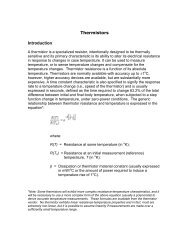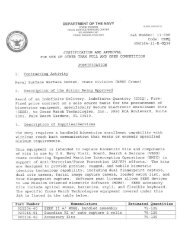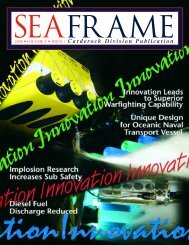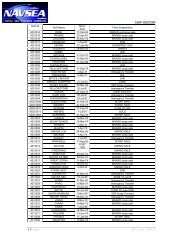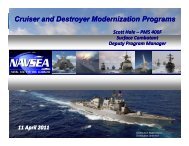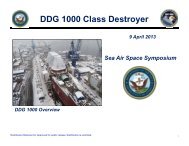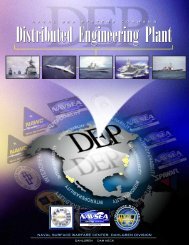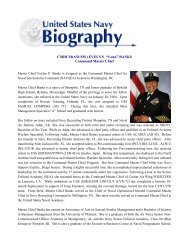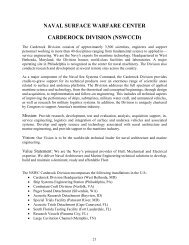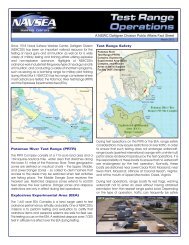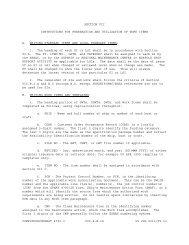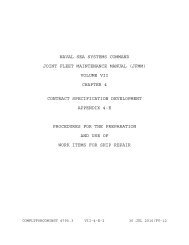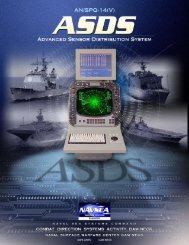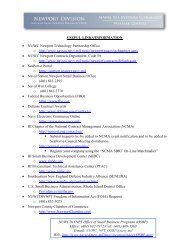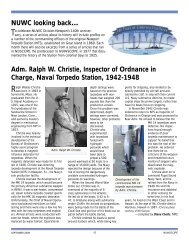Volume 6, Issue 1 - Naval Sea Systems Command - The US Navy
Volume 6, Issue 1 - Naval Sea Systems Command - The US Navy
Volume 6, Issue 1 - Naval Sea Systems Command - The US Navy
Create successful ePaper yourself
Turn your PDF publications into a flip-book with our unique Google optimized e-Paper software.
To start the modeling process on a simplistic<br />
footing, two properties, hardness and strength, were targeted.<br />
“For our demonstration project,” says Forrest, “we wanted<br />
the modeling process to be difficult enough so we could show<br />
we actually had a system that was pretty functional, but not<br />
so difficult that we couldn’t do it at all. <strong>The</strong> reason we chose<br />
this particular alloy is that it is already in use in the fleet,<br />
and we needed a material which already had valid data we<br />
could work with.” To help accurately model the magnesium<br />
silicide particles, called a precipitate, in the AA6082 alloy,<br />
Forrest turned to PrecipiCalc, a software package which<br />
calculates precipitate distribution within a material. This<br />
was an important part of the modeling efforts, because the<br />
precipitate particles are dominant in determining the strength<br />
of the alloy, and Forrest wanted to be sure he could accurately<br />
model the particles.<br />
Although Forrest knows he can reduce the amount<br />
of time needed to qualify a new material for shipboard use,<br />
exactly how much time remains to be seen. “You almost have<br />
Core equities<br />
Left: A visual representation of the temperature and<br />
strain calculations for the extrusion of the LCS sidewall<br />
panel. Carderock Division researchers used a system<br />
similar to the one developed by General Electric. <strong>The</strong><br />
GE system provided a methodology and computational<br />
framework for accelerating the insertion of materials<br />
into an application, and resulted in an estimated 45 to<br />
70 percent reduction in insertion time for a nickel-based<br />
superalloy into a turbine disk application, largely due to<br />
reduced testing requirements. New materials for <strong>Naval</strong><br />
applications also require substantial qualification testing.<br />
Through the use of the AIM Modeling and Simulation<br />
toolsets, researchers have an opportunity to realize<br />
economies in the <strong>Naval</strong> materials qualification process.<br />
Image provided by Dr. David R. Forrest, NSWC Carderock Division.<br />
Left: A section of the<br />
extruded AA6082 aluminum<br />
alloy-based LCS sidewall<br />
panel with integral<br />
stiffeners. <strong>The</strong> AIM promises<br />
to make an impact on the<br />
time required to qualify a<br />
new material for shipboard<br />
use, but the amount of<br />
time reduction will vary<br />
depending on the material<br />
chosen for a particular<br />
application, as well as how<br />
the material will be used.”<br />
Photo by William Palmer,<br />
NSWC Carderock Division.<br />
to do a case study,” he says, “and, depending on the material<br />
you pick and what its application is, it’s still going to vary<br />
as to how long it will take to get a new material on board a<br />
ship. It will still be on the order of years to qualify the new<br />
material, but not decades. It may be two years, or five years,<br />
and much will depend on how critical the component is.”<br />
Technical Point of Contact<br />
Dr. David R. Forrest<br />
david.r.forrest@navy.mil<br />
301-227-5033 (DSN 287)<br />
Core Equity Leader, Structures and Materials<br />
Stephen Roush<br />
stephen.d.roush@navy.mil<br />
301-227-3412 (DSN 287)<br />
SEAFRAME<br />
23



